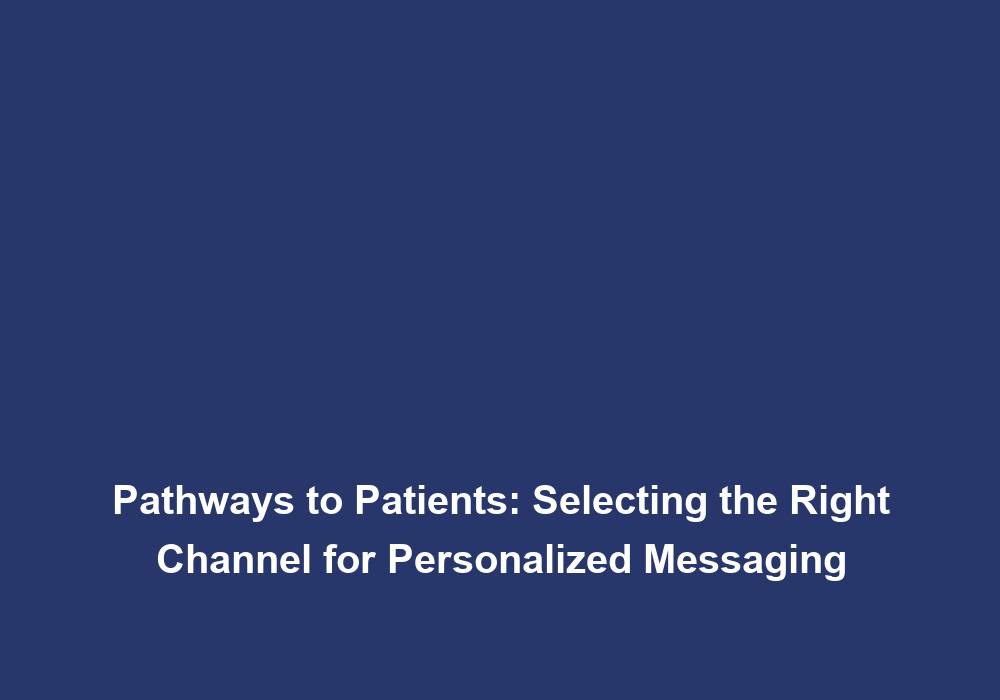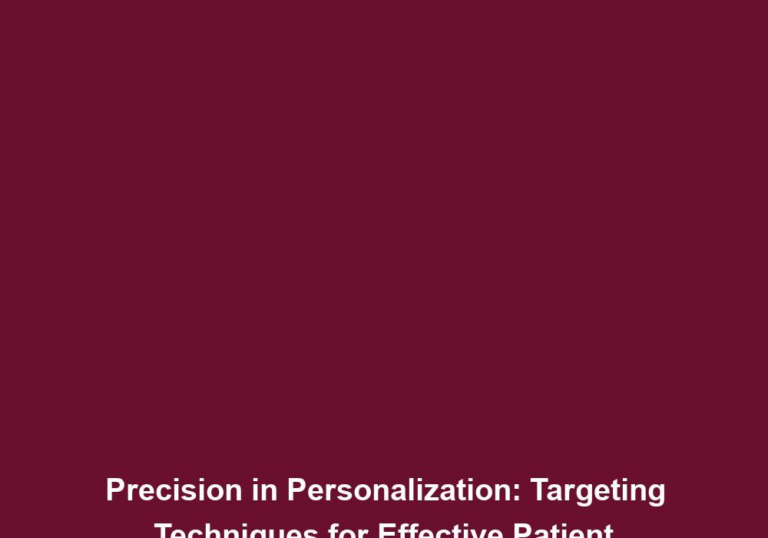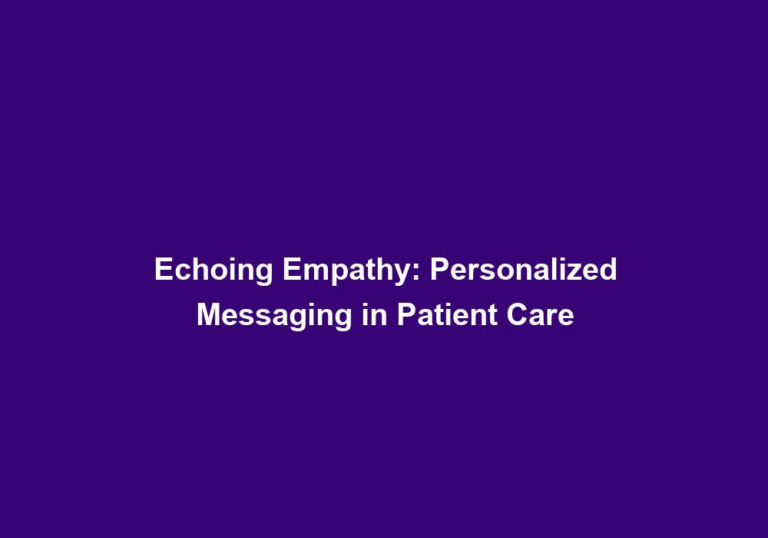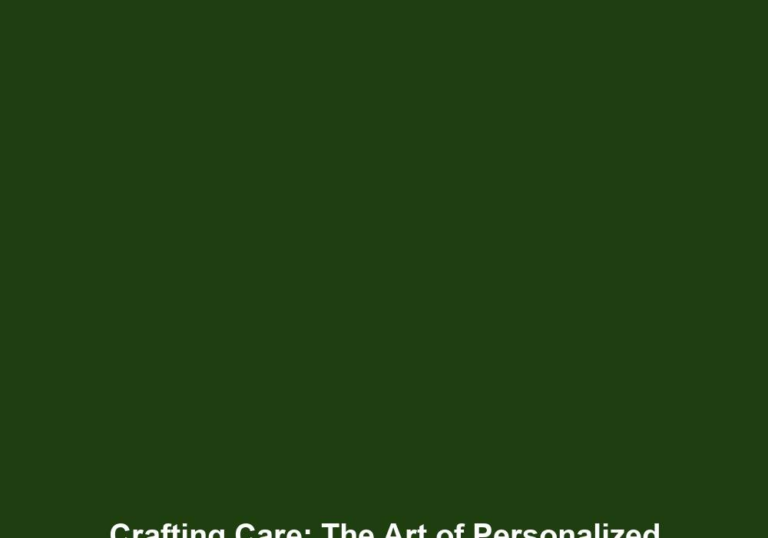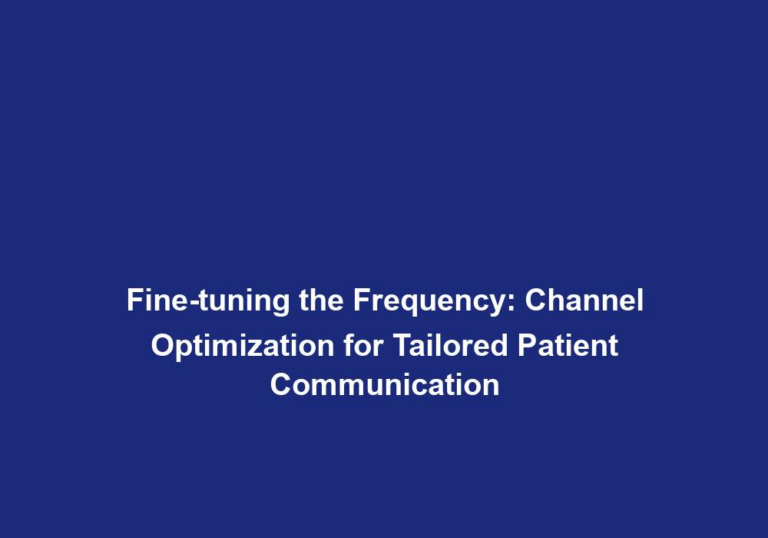Pathways to Patients: Selecting the Right Channel for Personalized Messaging
In today’s digital age, effectively reaching patients with personalized messaging has become essential in healthcare marketing. With the wide variety of communication channels available, it can be challenging to determine the most effective pathway to connect with patients in a personalized manner. This article aims to explore various channels and provide insights on selecting the right one for delivering tailored messages to patients.
Understanding the Importance of Personalized Messaging
Personalization is no longer just a marketing buzzword; it has transformed into an essential strategy for healthcare providers and organizations. Effective personalized messaging can improve patient engagement, boost adherence to treatment plans, and ultimately enhance patient outcomes.
When patients receive messages that are relevant to their specific healthcare needs, it establishes a sense of trust and demonstrates that the healthcare provider understands their unique circumstances. This personalized approach helps build stronger patient-provider relationships, leading to increased patient satisfaction and loyalty.
It is important to note that personalized messaging goes beyond addressing patients by their names. It involves tailoring the content and delivery of messages to align with the individual needs, preferences, and characteristics of each patient. By doing so, healthcare providers can create a more personalized and impactful communication experience.
Key Considerations for Selecting the Right Channel
Choosing the right channel for personalized messaging requires a thoughtful approach. Here are some key considerations to keep in mind:
1. Patient Demographics and Preferences
Understanding your target audience is fundamental to selecting the appropriate channel. Consider factors such as age, gender, location, and cultural background. Millennials might prefer social media platforms, while older adults may prefer more traditional channels like email or direct mail.
Conducting patient surveys or analyzing data from previous campaigns can provide valuable insights into patient preferences. By aligning the channel with patient demographics and preferences, you can improve engagement and response rates.
To further enhance personalization, consider segmenting your patient database based on specific criteria. This allows you to tailor messages even more precisely, increasing the relevance and effectiveness of your communication.
2. Message Content and Complexity
Different channels have varying limitations when it comes to conveying complex healthcare information. Consider the type of message you want to deliver and its complexity. For instance, if you need to communicate detailed medical instructions, email or direct mail might be more suitable than social media posts with character limitations.
Ensure the channel you choose supports the necessary format to effectively convey your message without compromising its clarity or comprehensiveness.
To make your messages more impactful, consider using storytelling techniques to engage patients emotionally. This can help them better understand and connect with the information being conveyed, leading to improved patient comprehension and compliance.
3. Reach and Accessibility
Evaluate the reach and accessibility of each channel. While social media platforms offer a vast audience, not all patients may have accounts or actively engage with these platforms. Similarly, while email is widely used, some patients may struggle with accessing or managing their inbox.
Consider the channel that ensures the greatest reach and accessibility for your target audience. This might involve employing a multi-channel approach to accommodate various patient preferences and ensure your messaging reaches as many patients as possible.
To further optimize reach, leverage the power of search engine optimization (SEO) techniques. By optimizing your content for relevant keywords and using appropriate meta tags, you can improve the visibility of your messages in search engine results, making it easier for patients to find and engage with your content.
4. Regulatory Compliance and Privacy
The healthcare industry is heavily regulated, and complying with patient privacy laws is of utmost importance. Ensure the chosen communication channel meets the necessary security and privacy standards, especially when transmitting sensitive healthcare information.
Platforms like secure patient portals or encrypted messaging systems offer a more secure way to deliver personalized messages, ensuring patient data confidentiality and compliance with regulatory requirements.
To address privacy concerns, clearly communicate your organization’s commitment to patient privacy and data security. This can help alleviate any concerns patients may have about sharing sensitive information and increase their trust in your messaging.
Channels for Personalized Messaging
Now that we have considered the key factors, let’s explore some of the commonly used channels for personalized messaging in the healthcare industry:
1. Email
Email remains a popular choice for personalized messaging due to its versatility and widespread usage. It allows for detailed and comprehensive communication, making it ideal for conveying complex healthcare instructions, appointment reminders, or sharing educational materials.
With email marketing tools, you can segment your patient database and send targeted messages based on specific criteria. Personalization features such as merging patient names or using dynamic content can enhance the effectiveness of your email campaigns.
To improve engagement, consider using eye-catching subject lines and visually appealing designs in your emails. Additionally, monitor email analytics to track open rates, click-through rates, and conversions, allowing you to refine your messaging strategy over time.
2. SMS and Mobile Messaging
With the increasing use of smartphones, SMS and mobile messaging have proven to be effective channels for personalized healthcare communication. SMS offers a direct and immediate way to reach patients, particularly for time-sensitive messages like appointment reminders or medication alerts.
Mobile messaging platforms, on the other hand, provide more interactive features, such as two-way communication, allowing patients to ask questions or provide feedback. Additionally, mobile apps can deliver personalized content tailored to each patient’s preferences and needs.
To ensure the success of your SMS and mobile messaging campaigns, optimize your messages for mobile devices. Keep the content concise and easy to read, and include clear call-to-action buttons for patients to take the desired action.
3. Social Media
Social media platforms present an opportunity to engage patients in a more interactive and informal manner. They allow for real-time communication, enabling healthcare providers to share educational content, answer patient queries, and build patient communities.
When using social media for personalized messaging, it is important to maintain patient privacy and adhere to regulations. Platforms like Facebook groups or closed communities offer a controlled environment for fostering patient engagement while ensuring privacy.
To maximize the impact of your social media efforts, create a content calendar to plan and schedule posts in advance. This allows for consistent messaging and ensures that you are providing valuable content to your followers on a regular basis. Additionally, monitor social media analytics to understand which types of content resonate most with your audience.
4. Direct Mail
Despite the digital revolution, traditional channels like direct mail still hold value in personalized messaging. Direct mail campaigns can be tailored to individual patients based on their healthcare needs, making patients feel valued and cared for.
Direct mail allows for tangible communication, providing patients with physical materials like brochures, appointment reminders, or personalized letters. This channel can be particularly effective for reaching older adults who may be less tech-savvy or prefer physical copies of information.
To make your direct mail campaigns more engaging, consider incorporating personalized elements such as handwritten notes or customized designs. This personal touch can make a significant impact and leave a lasting impression on patients.
5. Secure Patient Portals
Patient portals offer a secure and convenient platform for personalized messaging within the healthcare ecosystem. These online portals allow patients to access their medical records, communicate with their healthcare providers, and receive tailored messages specific to their health conditions and treatment plans.
Secure patient portals ensure compliance with privacy regulations, allowing patients to have control over their health information while enabling healthcare providers to deliver personalized messages with confidence.
To encourage patient adoption of secure patient portals, provide clear instructions on how to access and navigate the portal. Additionally, offer support and assistance to patients who may have difficulty using the platform, ensuring that they can fully benefit from the personalized messaging and services available.
Conclusion
Selecting the right channel for personalized messaging is crucial for effective patient engagement in the healthcare industry. By considering patient demographics, message content, reach, and regulatory compliance, healthcare providers can make informed decisions on which channels to utilize.
Remember, personalization is key to building strong patient relationships. Whether it is through email, SMS, social media, direct mail, or secure patient portals, tailoring your messages to individual patients can lead to improved patient outcomes, enhanced patient satisfaction, and increased loyalty to your healthcare organization.

